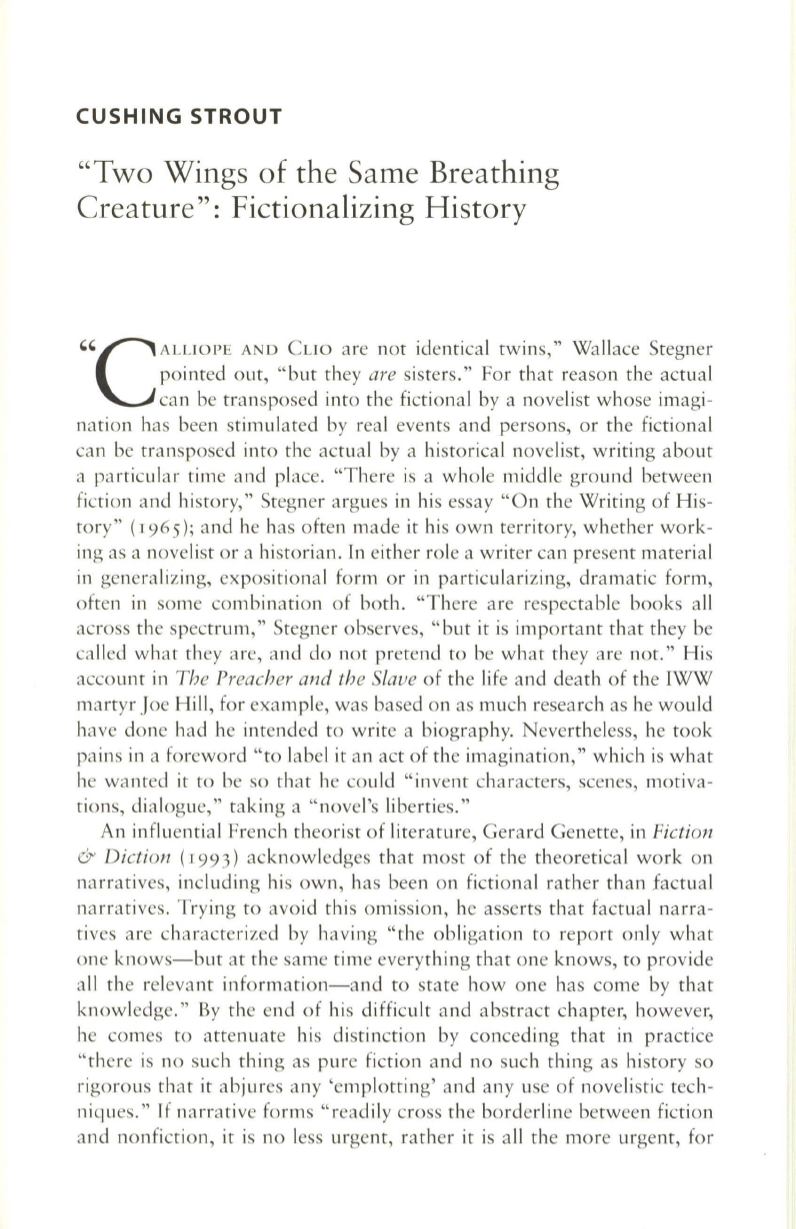
CUSHING STROUT
"Two Wings of the Same Breathing
Creature": Fictionalizing History
"C
ALLIOPE AND CLIO
are not identical twins," Wallace Stegner
pointed out, "but they
are
sisters." For that reason the actual
can be transposed into the fictional by a novelist whose imagi–
nation has been stimulated by real events and persons, or the fictional
can be transposed into the actual by a historical novelist, writing about
a particular time and place. "There is a whole middle ground between
fiction and history," Stegner argues in his essay "On the Writing of His–
tory"
(I965);
and he has often made it his own territory, whether work–
ing as a novelist or a historian. In either role a writer can present material
in generalizing, expositional form or in particularizing, dramatic form,
often in some combination of both. "There are respectable books all
across the spectrum," Stegner observes, "but it is important that they be
called what they are, and do not pretend to be what they are not." His
account in
The Preacher and the Slave
of the life and death of the IWW
martyr Joe Hi ll, for example, was based on as much research as he would
have done had he intended to write a biography. Nevertheless, he took
pains in a foreword "to label it an act of the imagination," which is what
he wanted it to be so that he could "invent characters, scenes, motiva–
tions, dialogue," taking a "novel's liberties."
An influential French theorist of literature, Gerard Genette, in
Fiction
&
Diction
('993)
acknowledges that most of the theoretical work on
narratives, including his own, has been on fictional rather than factual
narratives. Trying to avoid this omission, he asserts that factual narra–
tives are characterized by having "the obligation to report only what
one knows-but at the same time everything that one knows, to provide
all the relevant information-and to state how one has come by that
knowledge." By the end of his difficult and abstract chapter, however,
he comes to attenuate his distinction by conceding that in practice
"there is no such thing as pure fiction and no such thing as history so
rigorous that it abjures any 'emplotting' and any use of novelistic tech–
niques."
If
narrative forms "readily cross the borderline between fiction
and nonfiction, it is no less urgent, rather it is all the more urgent, for


